The Quiet Achiever Puts SIA in its Place
Book Review of Mr SIA Fly Past by Ken Hickson
Mr SIA Fly Past
December 2014
By Ken Hickson
Publisher: World Scientific Publishing Co Pte Ltd
Reviewed by Floyd Cowan
The cover of Ken Hickson’s Mr SIA – Fly Past states ‘Introducing the life and times of a legend — Lim Chin Beng — who was the instrumental in the creation of Singapore Airlines.’
Mr SIA – Fly Past is what you would expect from the former aviation writer. This is a detailed and well-documented account of the life of Lim Chin Beng who served as Managing Director of SIA for 10 years from the airline’s inception in October 1972. As Mr Lim had a long career at Singapore’s national carrier and its predecessors, it is only to be expected that the history of Singapore Airlines and the aviation industry would be well covered too.
The New Zealand born author and editor knew Mr Lim and his family long before they collaborated on this book. Through many years of working with Mr Lim and encountering each other in different work roles they held over those years Mr Hickson is confident in calling him “a legend in international aviation. He was a visionary. He was a very articulate thinker.” Mr Lim is referred to as ‘the Quiet Achiever’ and the 230 pages supports all these assertions.
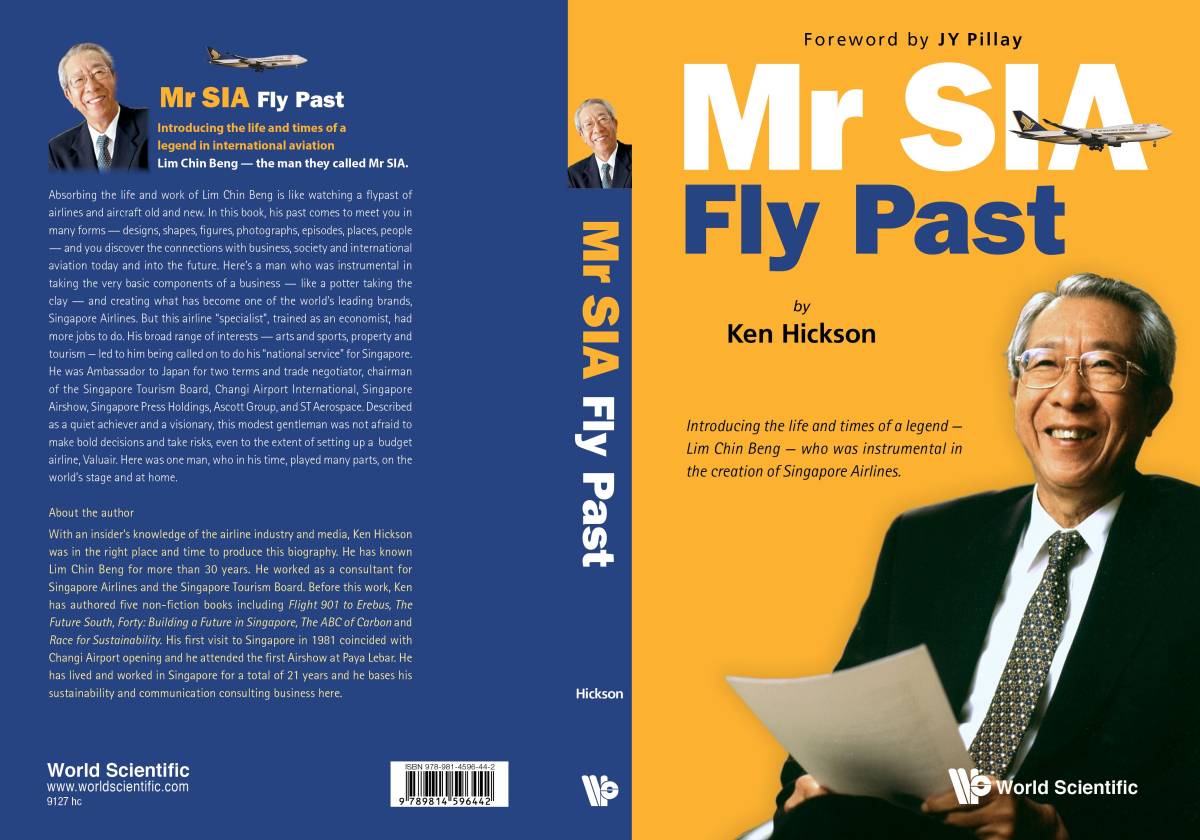
Mr Hickson has said, “I see the book as more of a ‘case study on business leadership’ which I agree with. The 23 chapters are mostly topics that cover significant stages and events in Mr Lim’s career. ‘Designer Days’ delves into the creation of the uniform for SIA’s flight crew. He covers this topic thoroughly, looking at it from all angles – and this chapter alone could be viewed as a case study. When you finally close the book, you have a very clear idea of the ins and outs of building every aspect of SIA. You also go away being well-informed of the numerous other positions Mr Lim held.
What this book isn’t is a biography of Mr Lim’s personal life. We learn little about his wife Winnie, and the little we do learn is about how important she was in helping her husband in his role as Ambassador to Japan. We gain little knowledge of their son Arthur and even less about daughter Sharon. In the opening pages of Mr SIA Fly By the milestones of Mr Lim’s life are listed over three pages. We can easily see that in 1986 he won the Singapore Businessman of the Year Award, but there is no mention of when he was wedded to Winnie and no mention of the birth of either child. So, we must assume this is not meant to be an examination of the personal life of the businessman. I wouldn’t call this a failing of the book as it seems that was not what Mr Hickson intended it to be.
What he did intend was that Mr Lim, who made every effort to stay out of the spotlight, be given the recognition Mr Hickson believes he is due. The man’s achievements are many and he succeeded despite the demanding times he lived in.
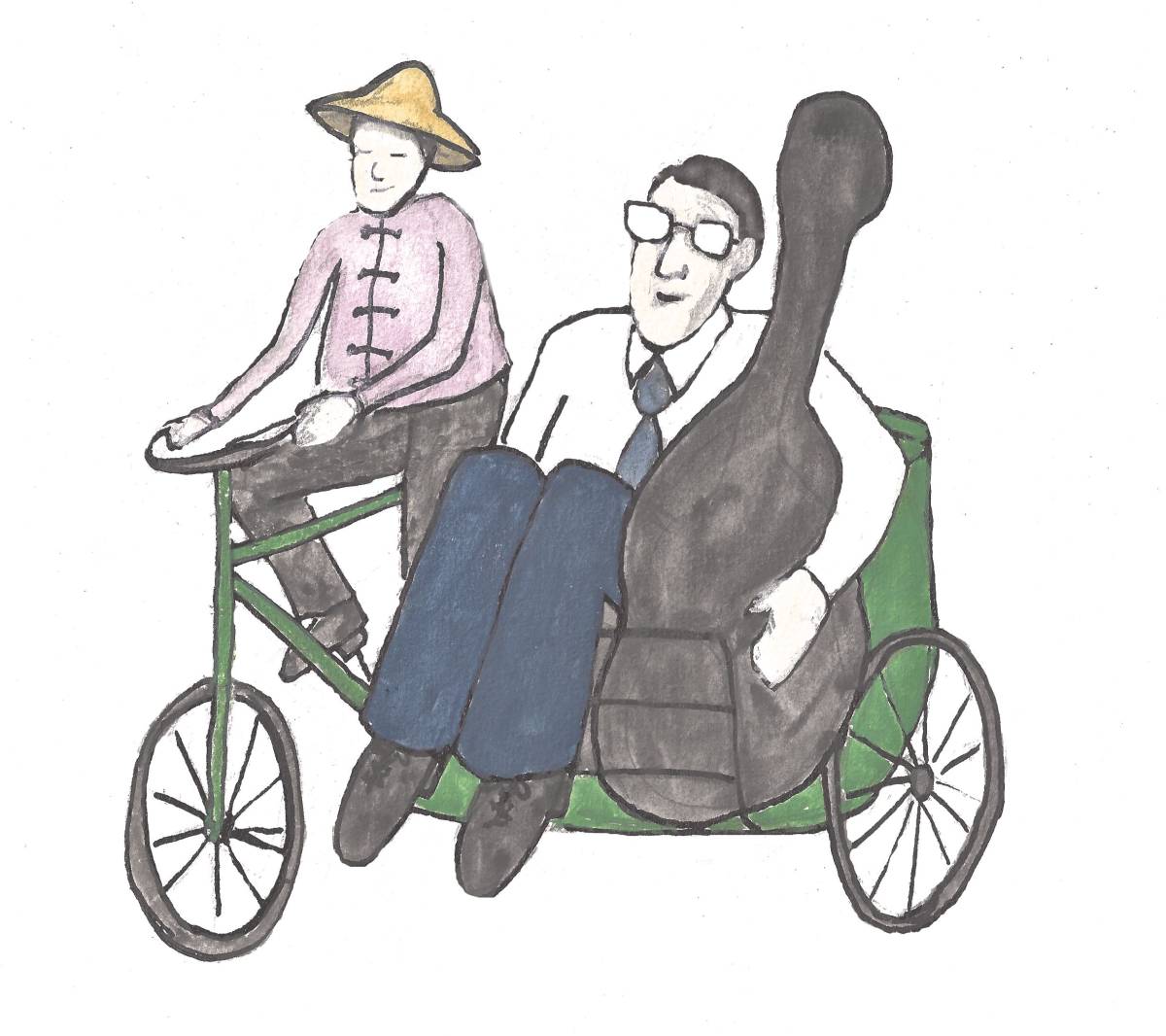
Wheel Music. The young Lim Chin Beng in his preferred mode of travel from hostel to music lessons and performances - with his double bass in hand - in a trishaw. Drawing by Australian Artist Dave Hickson.
One quickly realizes what tremendous pressure the staff and management were under to make SIA successful. Right from the beginning Prime Minister Lee Kuan Yew made it clear that if SIA didn’t make a profit, he “would shut it down.”

From Mr SIA Fly By
How was it that this unlikely venture not only survived, was immediately profitable, and went on to become the envy of most of the world’s airlines? This is where Mr Hickson gets into the meat of the matter, with a splattering of dessert sprinkled in. He delves into the development of the award-winning airline that became respected around the world. With Mr Hickson’s talent for curating details from a variety of sources he covers the ground extensively. For those who weren’t close to the scene, and for young people who don’t know the history, each step in SIA’s growth is chronicled. One learns about the design of SIA’s uniforms, the Singapore Girl brand and SIA’s in-flight service that ‘even other airlines talk about’ and why they became important to brand development and the success of the airline.
Mr Hickson goes into the challenges a new ‘upstart’ had when facing long established international airlines that didn’t want the competition from an airline originating from one of the smallest countries in the world. Mr Lim had to negotiate to buy planes and sign off on multi-million-dollar contracts for assets that would either make them a successful operation or would slowly drag them down for not being the right aircraft at the right time and place. Air Routes were particularly difficult and once again Mr Lim’s quiet, non-confrontational style helped him achieve his goals for the airline.
On each topic Mr Hickson went to public and private sources to provide details and quotes. He drew on books, speeches, newspaper and magazine articles. Sources are credited in the endnotes of each chapter. And, of course, he used information gathered from conversations and ‘interviews’ with Mr Lim.
In addition to his years at SIA, the book covers Mr Lim’s role with Valuair, as Chairman of the Singapore Tourist Promotion Board, as Ambassador to Japan, as a Director at Singapore Press Holdings, Chairman of Changi Airports International, on the boards of property companies, and at many of the positions he held after retiring from SIA. The book lays it all out in short, usually succinct, easy to read chapters. For his efforts, the ‘Quiet Achiever’ received many awards, and this book helps us to understand why.
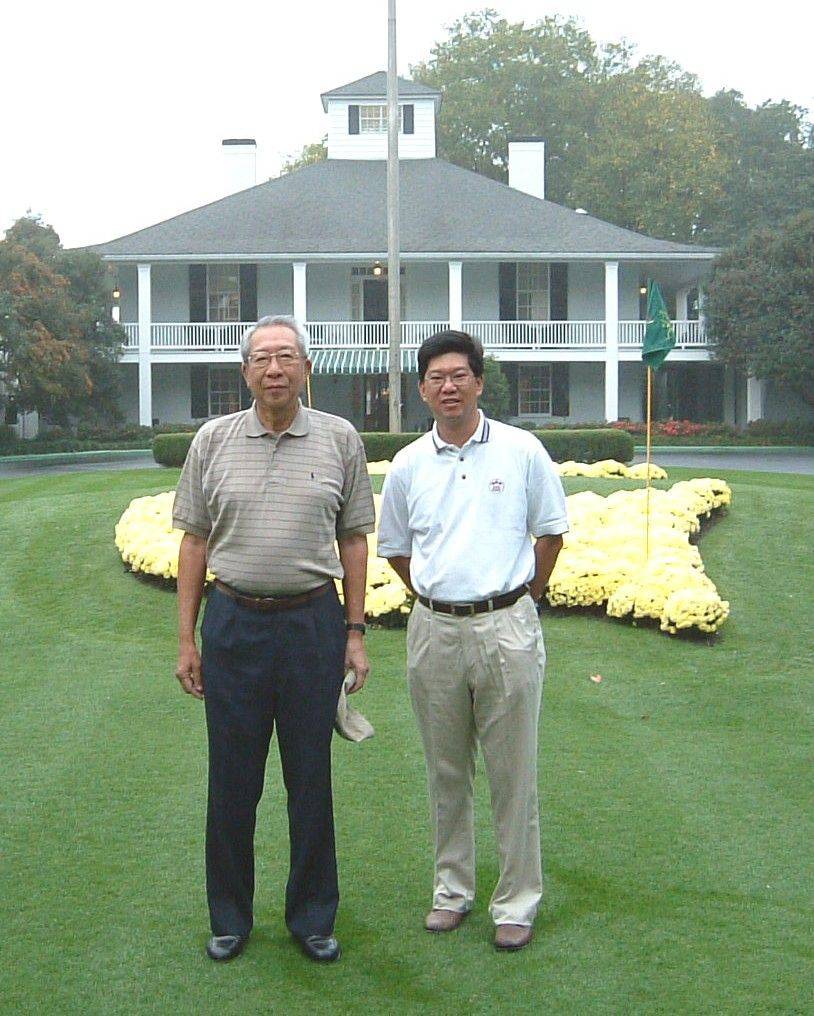
Mr Lim with son Arthur
At the beginning of each chapter Mr Hickson has a quote apropos to its subject. For Chapter 12, Diplomatic to a Tea, British journalist David Frost’s line is used: “Diplomacy is the art of letting somebody else have your way.” Very appropriate considering Mr Lim’s approach to business and diplomacy.
There are interesting little gems from Mr Lim’s two terms as Singapore’s Ambassador to Japan. Ambassador Lim was disappointed to learn that, on the occasion of the Crown Prince’s marriage to Masako Owada that Singapore could not present a gift. “Only countries with royalty could offer presents.” Not easily stymied he approached Singapore’s Botanical Gardens and asked if one of their orchids could be named for the Princess. Three colours were available, and Ambassador Lim wanted Ms Owada to choose the colour. But the Imperial Household told him to pick the colour. It was through the good offices of Winnie, who was friends with Masako’s mother, that they were able to have the Princess chose the orchid she wanted.
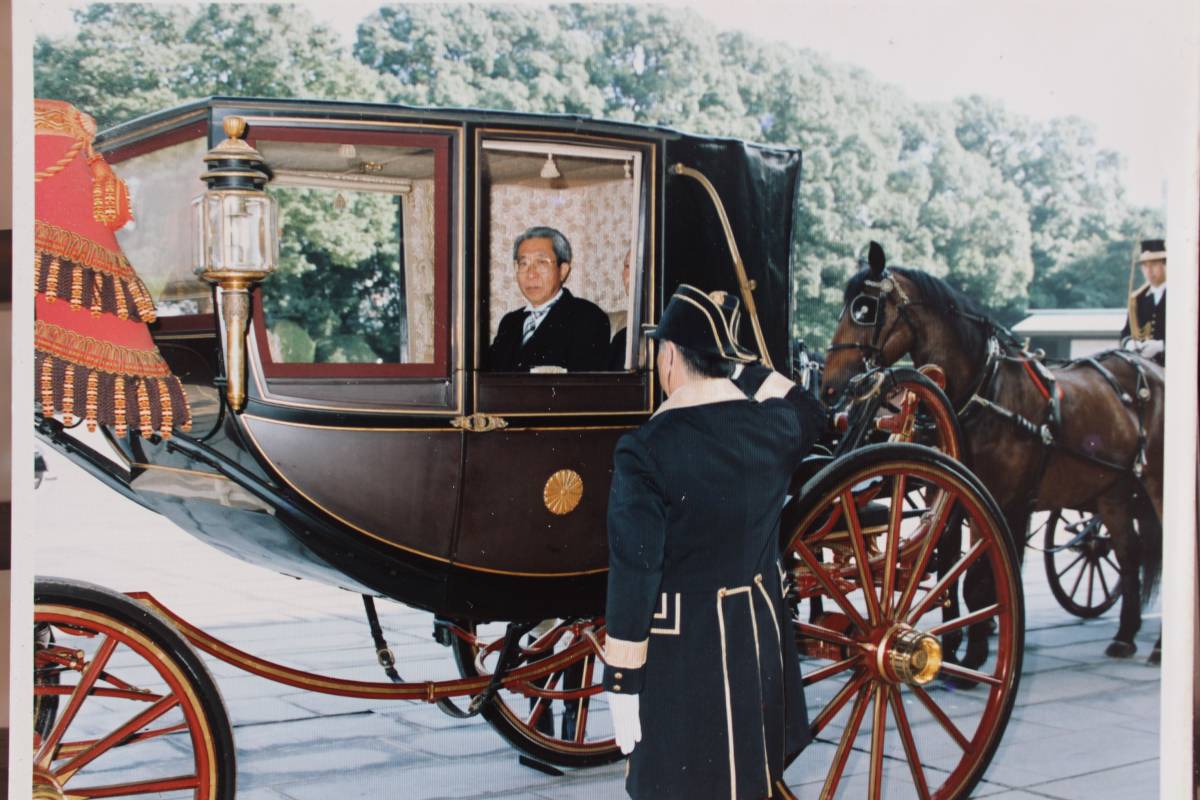
Well Coached. Lim Chin Beng arriving in style at the Imperial Palace in Tokyo for the first time to present his credentials as Singapore's Ambassador to Japan in 1991. (From Lim family collection)
Mr Lim, as he did in other situations, made this a teaching moment, writing about the ‘Role of the Wife’. Throughout the book, Mr Lim’s advice on various subjects is given. Mr Hickson, for his part, often includes interesting or humorous stories. As SIA Managing Director, Mr Lim had the ‘onerous’ job of having to sit through interviews of up to 200 young ladies a day who hoped to be chosen to be a Singapore Girl.

Singapore Airlines Photo
While at times the focus drifts away from Mr Lim by the end you do have a sense of who the man is and his managerial style. His demand for quality on every level was part of his success. His door was always open, and it seemed he got the best out of the people who worked for him. Mr Lim is complimented for his style of management and for the way he handled staff, associates and the many people he had to negotiate with.
One gets the sense that Mr Hickson wanted to get more out of Mr Lim, but his questions were often brushed aside. He writes: “In action at a press conference for the airline, he would give carefully-considered answers. Rarely would he extemporise or go beyond giving a straight answer to a question. He even appeared shy on camera or when confronted by insistent questioning.” Being considered quiet may be a good quality for a diplomat, but not the best attribute when putting one’s life story together.
In Chapter 16, ‘Value Proposition’, on the inception and subsequent demise of Valuair, which the then former airline executive was one of the key players, Ken Hickson asks Mr Lim if he would have liked to see things turn out differently. The response was: “A smile and a shrug.” It was not the only time Mr Lim chose not to address a direct question.
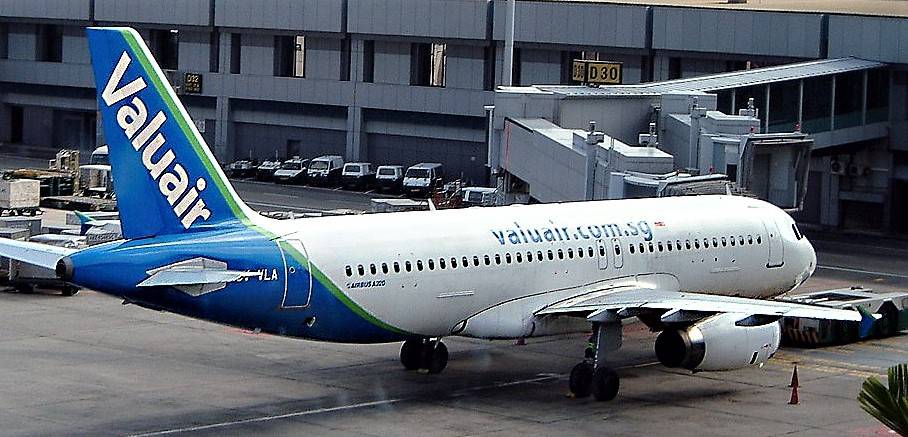
The author compensates for this by going to public sources for statements made by Mr Lim, which results in an informative book. However, there were times where I wanted to know more of what was going on in the mind of SIA’s Managing Director. He faced many tough situations such as with the pilots and their union. “Things came to a head for SIA as early as 1980 when the Singapore Airlines Pilots’ Association (SIAPA) called for a members’ work-to-rule action and, in doing so disrupted the schedules of several flights.” Though this was a critical moment in the history of the airline Mr Lim only admits, there were “a few problems from some of the pilots, when they decided to go slow.”
Mr Hickson reveals that Singapore’s ‘no-nonsense’ Prime Minister, Lee Kuan Yew, had a stronger reaction, threatening to ‘close down the airline’ if the pilots and their union ‘did not behave’. Not the only time the PM made such a threat. What Mr Lim thought of Singapore’s long serving Prime Minister, we never learn, and probably shouldn’t expect to know as Mr Lim was determinedly non-political.
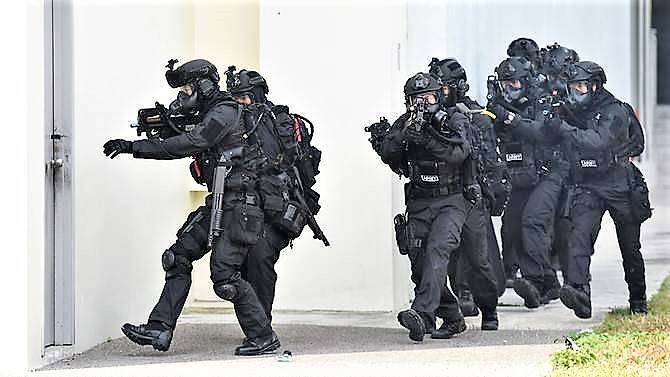
The SAF’s Special Operations Task Force, a counter-terrorism command, comprises members from the Special Operations Force and Naval Diving Unit. (Photo: Facebook/Modern Elite Forces)
Similarly, we don’t get a peak behind the curtain when SIA Flight 117 was hijacked in March 1991 by Pakistani militants. The Airbus A310-300 was stormed by the Singapore Special Operations Force and all the hijackers were killed. There were no fatalities among passengers or crew. One can imagine how tense this would have been for all concerned with difficult decisions to be made. Who made the decision to send in the Special Forces? When was it made? Were they prepared for passengers and crew to be amongst the casualties?
After reading Mr Lim’s recounting of the incident, one still has to imagine what happened. “Mr Lim talked about the hijacking and how he and Chairman Pillay spent many anxious hours in the control centre at Changi Airport “riding out’ the drama.” And that is it. That’s all we get to know.
The book does not simply span the history of aviation but speculates on what flying will be like in years to come. You can almost hear Mr Hickson chuckling as he delves into his passion to write the chapter ‘Flying into the Future’. Seven years on from when he wrote it is easier to see where the prognostications hit or missed the mark.
Though not written as a prediction he states, “SIA, for one, has long held on to the belief that freight is of great economic importance…” He could not foresee the coming Covid-19 pandemic when freight became hugely important to most airlines just to keep afloat.
The pandemic also emphasized Mr Lim’s point of the importance of tourism to airlines and to the people themselves as it “provides for the human craving for exoticism and excitement.”
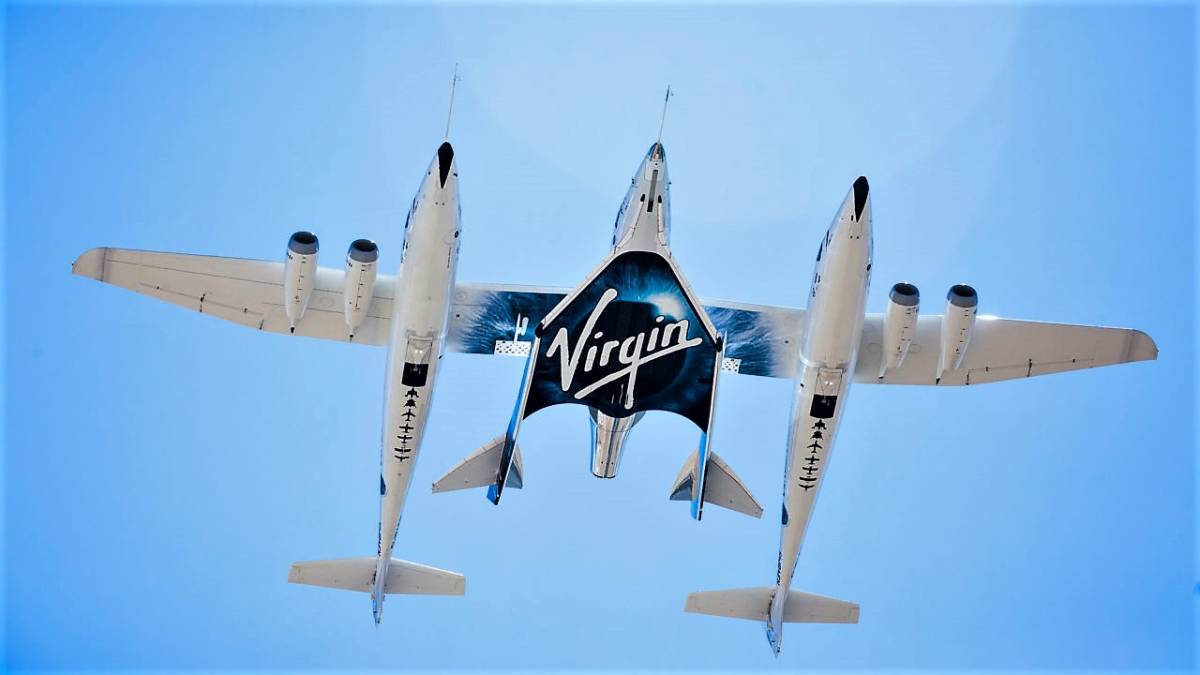
In the penultimate chapter Mr Hickson covers: the increasing number of people who will take to the skies, bringing down the barriers to travel, the need for aircraft to be more sustainable, the reviving of supersonic jets and flight into space - which is about to happen as this is being written with Richard Branson ready to launch Virgin Galactic.
It is the need to be more sustainable where he really nails it. And which, once again, the global pandemic brought into sharp focus as the air became cleaner during times of national lockdowns. “That is well on the way with the design and manufacture of aircraft, along with the desire of whole industry to reduce aviation’s impact on the environment and cut its emissions of greenhouse gases.
We will have to wait even longer to see if Mr Lim was right when he stated: “For the future … there will be supersonic passenger aircraft and they will be as quiet as today’s passenger jets. They will have to be designed to carry at least 300 passengers a flight and they will offer the fastest and most convenient way to travel long distances for those who afford to pay a premium.”
Mr Hickson succeeded in creating a ‘case study on business leadership’. Where the book would have benefited would have been from tighter editing to clean up minor errors and to eliminate some of the repetition that occurs throughout the book.
ORDER HERE: fcowanmedia@gmail.com : Or go to Amazon: The Orange-Sofa: Unicorn Eyes: Walking Home: Singapore Circuit Breaker Zero Visibility - US$9.00 on line





